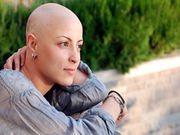Likelihood of other chronic conditions will stress health care system in next two decades
FRIDAY, July 1, 2016 (HealthDay News) — In 2016, nearly 62 percent of almost 16 million cancer survivors are aged 65 or older; and, by 2040, an estimated 73 percent of 26 million cancer survivors will be 65 or older, according to a report published in the July 1 issue of Cancer Epidemiology, Biomarkers & Prevention.
Shirley Bluethmann, Ph.D., M.P.H., a cancer prevention fellow at the U.S. National Cancer Institute, and colleagues analyzed federal health data from 1975 to 2012. With Census data, they projected the incidence of cancer from 2016 to 2040. In addition, the researchers used Medicare claims to estimate the impact of other chronic conditions such as cardiovascular disease, lung disease, and diabetes.
The team found that by 2040, cancer survivors aged 65 to 74 will make up 24 percent of all survivors, those aged 75 to 84 will make up 31 percent of all survivors, and those aged 85 and older will represent 18 percent. Currently, the prevalence of cancer is about the same for men and women. In older age groups, however, cancer is more common among men. Among those aged 65 to 69, 14 percent of men and 12 percent of women have been diagnosed with cancer. The gap increases with age. In the oldest group, 90 and up, 37 percent of men and 25 percent of women have been diagnosed with cancer. This gap is most likely due to more prostate cancer survivors, which is usually diagnosed at older ages, according to the researchers.
Among cancer survivors aged 65 to 69, 27 percent had a history of other medical problems. Among survivors aged 85 and older, 47 percent had other chronic conditions, the researchers found. In the face of this challenge, health care providers will have to build collaborative care teams — including doctors, nurses, and other caregivers — to be able to respond to the needs of this vulnerable population, Bluethmann told HealthDay. “We also need to emphasize the benefits of lifestyle for cancer prevention and control across the life course.”
Copyright © 2016 HealthDay. All rights reserved.








